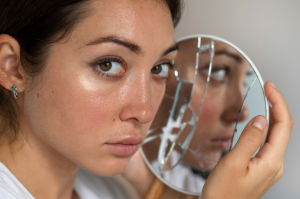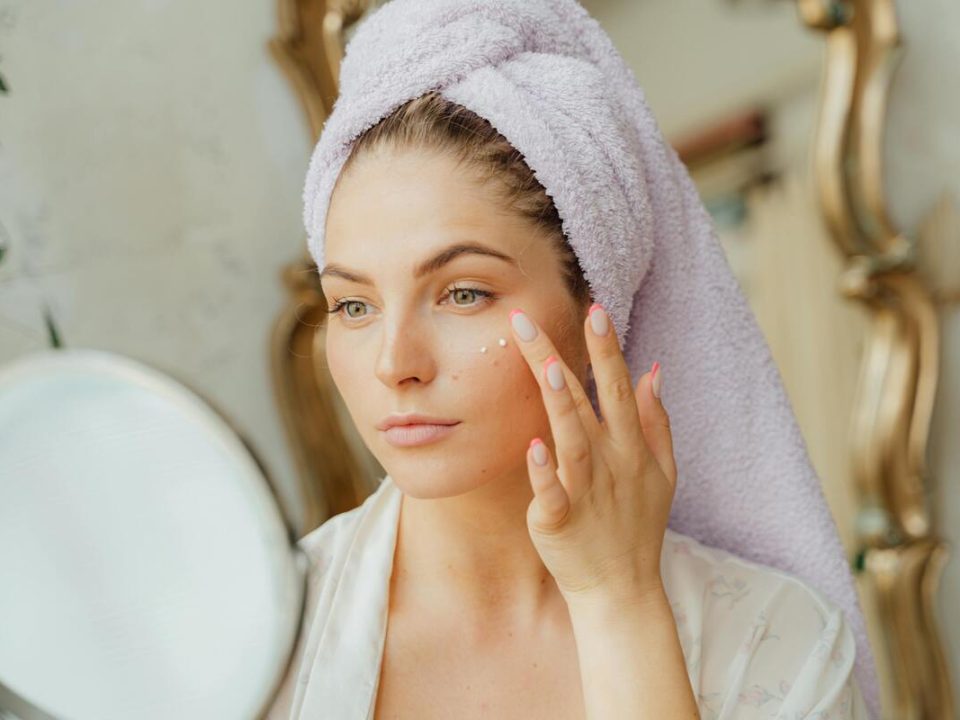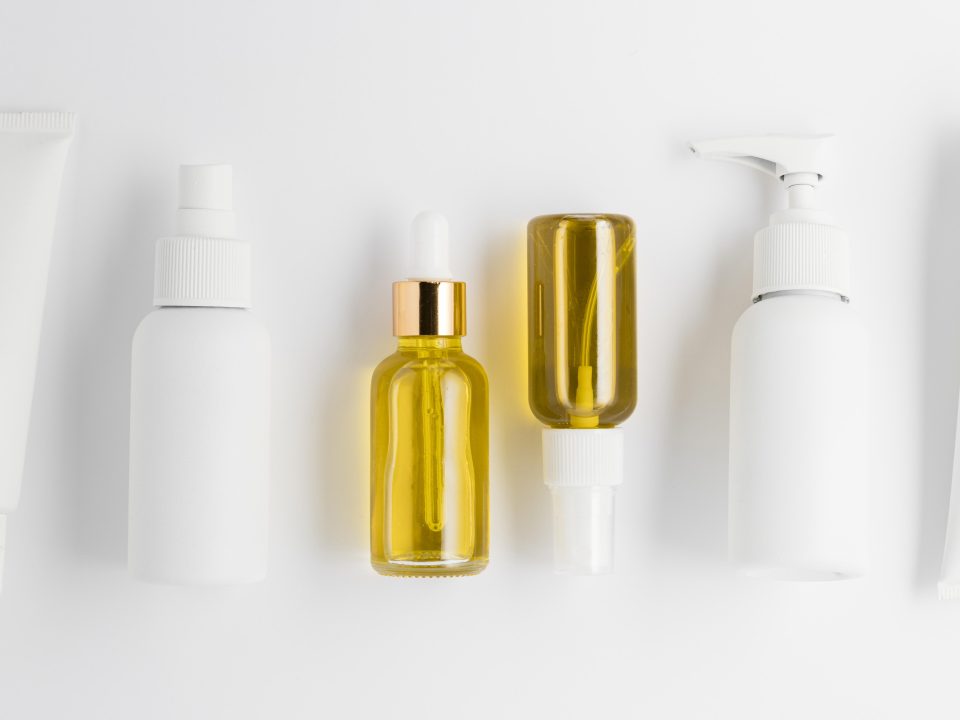
How To Use Salicylic Acid On Face?
March 7, 2024
Is Salicylic Acid Better For Acne?
March 7, 2024Salicylic acid is a fantastic ingredient for oily skin! Its unique properties help combat the specific concerns oily skin faces, such as excess oil production, clogged pores, and acne breakouts. Salicylic acid acts as a BHA (beta hydroxy acid), which means it exfoliates deeper within the pores to remove dead skin cells and sebum (oil) buildup. This not only helps prevent breakouts but also minimizes the appearance of enlarged pores, a common woe for those with oily skin.
Understanding Oily Skin and Its Challenges
Oily Skin Characteristics and Causes
Oily skin, characterized by its shiny appearance, enlarged pores, and tendency to breakout, can be a frustrating concern for many individuals. This type of skin produces excess sebum, the oil naturally secreted by our sebaceous glands. While sebum plays a crucial role in protecting the skin and keeping it supple, its overproduction can lead to a number of challenges:
- Shine and Greasiness: The most obvious characteristic of oily skin is its tendency to appear shiny and greasy throughout the day. This can be particularly noticeable in the T-zone (forehead, nose, and chin) where sebaceous glands are most concentrated.
- Enlarged Pores: Excess sebum can mix with dead skin cells and other debris, clogging pores and causing them to appear enlarged. This not only contributes to the shiny appearance but can also increase the risk of breakouts.
- Acne Breakouts: Clogged pores often create the perfect breeding ground for bacteria, leading to the development of pimples, blackheads, and whiteheads. Oily skin individuals are therefore more prone to experiencing acne breakouts.
Understanding the Causes of Oily Skin:
Several factors can contribute to the development of oily skin:
- Hormonal Fluctuations: Hormones play a significant role in regulating sebum production. Fluctuations in hormone levels, especially during puberty, pregnancy, and menstruation, can trigger increased oil production.
- Genetics: Oily skin can also be influenced by genetics. If your parents have oily skin, you are more likely to inherit the same skin type.
- External Factors: External factors like hot and humid climates, stress, certain medications, and even harsh skincare products can also contribute to increased oil production.
Introducing Salicylic Acid: A Powerful Ally for Oily Skin
Salicylic acid, a beta hydroxy acid (BHA), is a hero ingredient for oily skin. Unlike alpha hydroxy acids (AHAs) that primarily work on the skin’s surface, BHAs have the unique ability to penetrate deeper into the pores. This allows them to offer several benefits specifically targeted at the concerns of oily skin:
- Salicylic Acid as an Exfoliant: By dissolving the bonds between dead skin cells and sebum, salicylic acid effectively exfoliates the skin. This helps clear clogged pores, preventing breakouts and promoting a smoother, clearer complexion.
- Salicylic Acid for Oil Control: Salicylic acid possesses the ability to gently regulate sebum production. This helps control shine and prevent the greasy feeling associated with oily skin, leaving the skin looking mattified and balanced.
Why a Targeted Skincare Routine Matters for Oily Skin
While oily skin can be frustrating, it’s important to understand that it’s not necessarily a bad thing. Sebum plays a vital role in protecting the skin and maintaining its health. However, managing oily skin effectively requires a targeted skincare approach that addresses its specific concerns. By incorporating ingredients like salicylic acid into your routine, you can effectively combat excess oil, minimize breakouts, and achieve a healthier, more balanced complexion.
Benefits of Salicylic Acid For Oily Skin
Exfoliation
Salicylic acid, a BHA (beta hydroxy acid), offers a unique advantage for oily skin thanks to its ability to exfoliate deeper within the pores. Unlike AHAs (alpha hydroxy acids) that primarily work on the surface of the skin, salicylic acid’s oil-soluble nature allows it to penetrate the oil barrier and reach the depths of your pores. This is crucial for oily skin because dead skin cells and sebum (oily substance) can easily get trapped within these pores, leading to various concerns.
By acting as a chemical exfoliant, salicylic acid works its magic in several ways:
Dissolves Dead Skin Cells: Over time, dead skin cells accumulate on the surface and within pores. Salicylic acid acts like a gentle solvent, breaking down the bonds that hold these dead cells together. This allows the weakened dead skin cells to be easily washed away during cleansing, preventing them from clogging pores.
Unclogs Pores: With the dead skin cells removed, sebum (oil) can flow freely through the pores, preventing them from becoming blocked and inflamed. This reduces the formation of blackheads, whiteheads, and pimples, a major concern for people with oily skin.
Promotes Smoother, Clearer Skin: By removing the layer of dead skin cells, salicylic acid reveals the underlying fresh, healthy skin cells. This not only improves skin texture, making it feel smoother and softer, but also contributes to a brighter, more even-toned appearance.
Overall, the exfoliating properties of salicylic acid play a vital role in addressing several concerns associated with oily skin. By keeping pores clear and promoting cell turnover, it helps pave the way for a healthier, smoother, and clearer complexion.
Oil Control
Salicylic acid shines (pun intended) when it comes to managing oily skin by directly impacting sebum production, the natural oil produced by our sebaceous glands. Here’s how it works:
- Exfoliates the Sebum Pathway: Sebum travels up through the pores and reaches the skin’s surface. Salicylic acid, with its oil-soluble nature, can penetrate this pathway and dissolve the “glue” holding dead skin cells together. This allows the sebum to flow more freely, preventing buildup and clogged pores. By keeping the pathway clear, salicylic acid helps to regulate sebum production over time.
- Reduces Inflammation: Oily skin often struggles with enlarged pores and occasional breakouts, both of which can contribute to a shiny appearance. Salicylic acid’s anti-inflammatory properties can help soothe existing inflammation and redness associated with breakouts. This, in turn, can lead to a calmer, less irritated complexion with reduced shine.
- Indirectly Impacts Sebum Production: When pores are clogged with dead skin cells and sebum, the sebaceous glands can misinterpret this as insufficient oil production and go into overdrive, leading to increased oiliness. By keeping pores clear and preventing future clogs, salicylic acid indirectly helps regulate sebum production in the long run.
Benefit: Reduced Shine and a More Matte Appearance
The combined effects of salicylic acid on sebum production and inflammation translate to a noticeable benefit for oily skin: a reduction in shine and a more matte appearance. Here’s how:
- Less Sebum, Less Shine: With sebum production under control, there’s less oil reaching the surface of the skin, resulting in a reduction in that greasy, shiny look. This can be particularly beneficial for those who find their skin becoming oily throughout the day, especially in areas like the T-zone (forehead, nose, and chin).
- Improved Skin Texture: Salicylic acid’s exfoliating properties help remove dead skin cells that can contribute to a rough, uneven texture. As these cells are removed, the skin appears smoother and more refined. This smoother texture also reflects light differently, contributing to a less shiny and more matte appearance.
- Reduced Breakouts: By keeping pores clear and preventing future clogs, salicylic acid helps reduce the occurrence of breakouts. This not only minimizes the visibility of individual blemishes but also prevents the post-inflammatory hyperpigmentation (dark spots) that can sometimes follow breakouts, contributing to a more even-toned and matte complexion.
Pore Reduction
While salicylic acid doesn’t physically shrink the size of your pores, it can significantly improve their appearance by addressing the root cause of their enlarged state – clogged pores. Here’s how:
- Dissolves Sebum Buildup: As mentioned earlier, salicylic acid’s oil-solubility allows it to loosen and dissolve the sebum and dead skin cell “glue” clogging pores. This unclogging process allows the pore to return to its natural size, minimizing its appearance.
- Exfoliates the Pore Lining: Salicylic acid also gently exfoliates the inner lining of the pore, preventing future dead skin cell buildup and subsequent pore enlargement.
- Reduces Inflammation: Enlarged pores often appear even larger when surrounded by inflammation caused by breakouts. The anti-inflammatory properties of salicylic acid help to calm this inflammation, making the pores appear less noticeable.
Benefit: More Even-Toned and Refined Complexion
By addressing clogged pores and inflammation, salicylic acid contributes to a more even-toned and refined complexion. Here’s why:
- Reduced Pore Visibility: As pores become unclogged and their size appears minimized, they become less noticeable, leading to a smoother, more even-toned appearance.
- Less Breakouts, Less Hyperpigmentation: By preventing breakouts and reducing inflammation, salicylic acid helps minimize the occurrence of post-inflammatory hyperpigmentation (dark spots) that can sometimes follow breakouts. This translates to a more even skin tone overall.
- Improved Skin Texture: The exfoliating properties of salicylic acid remove dead skin cells, revealing smoother, brighter underlying skin. This contributes to a refined complexion with a healthy, radiant glow.
Anti-inflammatory Properties
- Soothing Existing Blemishes: Salicylic acid possesses mild anti-inflammatory properties, which can help to soothe existing blemishes and reduce redness associated with acne breakouts. This is particularly beneficial for inflammatory acne, such as papules and pustules.
- Calming Irritated Skin: While primarily used for its exfoliating and oil-regulating properties, salicylic acid’s anti-inflammatory effect can also help to calm irritated skin, especially for individuals prone to breakouts and sensitivity.
Additional Considerations:
- Concentration Matters: The effectiveness of salicylic acid varies depending on its concentration in the product. Generally, lower concentrations (around 1%) are gentler and suitable for beginners or those with sensitive skin. Higher concentrations (up to 2%) can be more effective for persistent acne but may also be more drying or irritating.
- Gradual Introduction: It’s crucial to introduce salicylic acid into your skincare routine gradually, especially if you have sensitive skin. Start with using it once or twice a week and monitor your skin’s response. You can gradually increase the frequency of use as your skin tolerates it better.
Choosing Salicylic Acid Products for Oily Skin
Salicylic acid comes in a variety of skincare product forms, each offering slightly different benefits and targeting specific concerns:
- Cleansers: These are a great way to incorporate salicylic acid into your daily routine. Look for cleansers with a concentration between 0.5% and 2%. They help remove excess oil, dead skin cells, and dirt from the surface of the skin, preventing clogged pores and breakouts. Opt for gentle, oil-free cleansers to avoid stripping your skin’s natural oils.
- Toners: Salicylic acid toners can provide a refreshing mid-day cleanse or help remove any leftover residue after washing your face. Choose alcohol-free formulas, as alcohol can be drying and irritating, especially for those with sensitive skin. Toners typically have a lower concentration of salicylic acid (around 1%) compared to cleansers.
- Serums: Formulated with a higher concentration of salicylic acid (up to 4%), serums offer a more targeted approach for areas of concern or stubborn breakouts. Apply a thin layer of serum after cleansing and toning, but before moisturizer.
- Spot treatments: These are ideal for treating individual pimples or blemishes. Salicylic acid helps unclog pores and reduce inflammation, speeding up the healing process. Look for spot treatments with a moderate concentration (around 2%) for targeted application.
Starting Low and Going Slow
When introducing salicylic acid into your routine, it’s crucial to start with a lower concentration (1-2%), especially if you have sensitive skin. This allows your skin to adjust and minimizes the risk of irritation. You can gradually increase the concentration as your skin tolerates it well.
Non-comedogenic is Key
Always choose products labeled as “non-comedogenic.” This means the product is formulated to not clog pores, which is crucial for oily skin prone to breakouts. Look for ingredients like water, glycerin, and hyaluronic acid, which are hydrating and won’t clog pores.
Application Tips
- Frequency: Incorporate salicylic acid into your routine gradually, typically 2-3 times a week. If your skin tolerates it well, you can increase to daily use, but be mindful of potential dryness. Listen to your skin and adjust accordingly.
- Patch Testing: Before applying any new product, especially on your face, perform a patch test. Apply a small amount to a non-sensitive area like your inner arm and wait 24 hours. If you experience any redness, irritation, or burning, discontinue use and consult a dermatologist.
- Moisturizing is Crucial: Salicylic acid, especially in higher concentrations, can be drying. To maintain a healthy moisture balance, follow up with a lightweight, oil-free moisturizer after using salicylic acid products. Look for ingredients like hyaluronic acid or ceramides to hydrate without clogging pores.
- Sun Protection is Essential: Salicylic acid can increase sun sensitivity. Always wear sunscreen with SPF 30 or higher, even on cloudy days, when using salicylic acid products. Reapply sunscreen every two hours or more often when sweating or swimming.
Combination with other skincare ingredients
Salicylic acid can be effectively combined with other beneficial ingredients for oily skin to create a well-rounded routine:
- Hyaluronic Acid: This humectant attracts and retains moisture, helping to counteract the drying effects of salicylic acid and maintain a healthy moisture barrier.
- Niacinamide: This multi-tasking ingredient helps regulate oil production, minimize the appearance of pores, and soothe inflammation, making it a great complement to salicylic acid.
Remember, consistency is key! For optimal results, use salicylic acid products consistently within your routine and be patient. It may take several weeks to see the full effects on your oily skin. If you experience any concerning side effects, discontinue use and consult a dermatologist for personalized advice.
Potential Side Effects of Salicylic Acid
While salicylic acid is generally well-tolerated, it’s important to be aware of its potential side effects, especially when incorporating it into your skincare routine for oily skin.
Dryness and Irritation
- Mechanism: Salicylic acid’s exfoliating properties can disrupt the skin’s natural moisture barrier, leading to dryness and irritation. This is particularly true for individuals with sensitive skin or those who use high concentrations or overuse the product.
- Symptoms: Dryness can manifest as flaky skin, tightness, and a rough texture. Irritation can present as redness, itching, burning, or stinging sensations.
- Prevention and Management:
- Start Low, Go Slow: Begin with a low concentration of salicylic acid (1-2%) and gradually increase the frequency and strength as your skin tolerates it.
- Focus on Gentle Products: Opt for formulations with hydrating ingredients like hyaluronic acid, glycerin, or ceramides to counteract potential dryness.
- Moisturize Consistently: Apply a fragrance-free, non-comedogenic moisturizer daily, even if your skin feels oily. This helps maintain a healthy moisture balance.
- Spot Treatment: Consider using salicylic acid as a spot treatment for individual blemishes instead of applying it all over your face.
Sun Sensitivity
- Mechanism: Salicylic acid can increase your skin’s sensitivity to sunlight. This is because it can thin the outer layer of the skin, making it more susceptible to sun damage.
- Risks: Increased sun exposure can lead to premature aging, sunburn, and even hyperpigmentation (dark spots).
- Prevention:
- Daily Sunscreen: Apply a broad-spectrum sunscreen with SPF 30 or higher every day, even on cloudy days.
- Reapplication: Reapply sunscreen every two hours, or more often if sweating or swimming.
- Sun-Protective Clothing: Consider wearing protective clothing, such as hats and sunglasses, when spending extended time outdoors.
Additional Considerations
- Patch Testing: Before using any new product, especially those containing salicylic acid, perform a patch test on a small area of your inner arm or jawline. Wait 24 hours to monitor for any negative reactions before applying it to your entire face.
- Listen to Your Skin: Pay close attention to how your skin reacts to salicylic acid. If you experience persistent dryness, irritation, or worsening acne, discontinue use and consult a dermatologist.
- Consult a Dermatologist: If you have concerns about using salicylic acid or managing oily skin, seeking guidance from a dermatologist is always recommended. They can assess your individual needs and recommend a tailored skincare routine to achieve your desired results.
Remember, incorporating new elements into your skincare routine requires a cautious and personalized approach. By being mindful of potential side effects and taking preventive measures, you can maximize the benefits of salicylic acid for your oily skin while minimizing the risk of irritation or discomfort.
Conclusion
Salicylic acid stands out as a reliable friend for those managing oily skin. Its ability to deeply exfoliate pores prevents dead skin and oil buildup, leading to clearer, smoother skin with minimized pores and a more even tone. Additionally, it regulates sebum production, controlling shine and offering a refreshed, matte appearance.
While salicylic acid is a valuable tool, remember it’s just one piece of the puzzle. Building a consistent skincare routine tailored to your individual needs is crucial. This routine typically includes a gentle cleanser, lightweight moisturizer, and sun protection. Consider incorporating other beneficial ingredients like hyaluronic acid for hydration and niacinamide for further oil control.
Everyone’s skin is unique, so consulting a dermatologist is always recommended, especially if you experience severe acne, have sensitive skin, or have any underlying concerns. They can assess your individual needs and recommend the most effective treatment plan for healthy, radiant skin. Remember, consistency is key! Combine effective products, a tailored routine, and professional guidance when needed to conquer oily skin and achieve a beautiful, healthy complexion.








